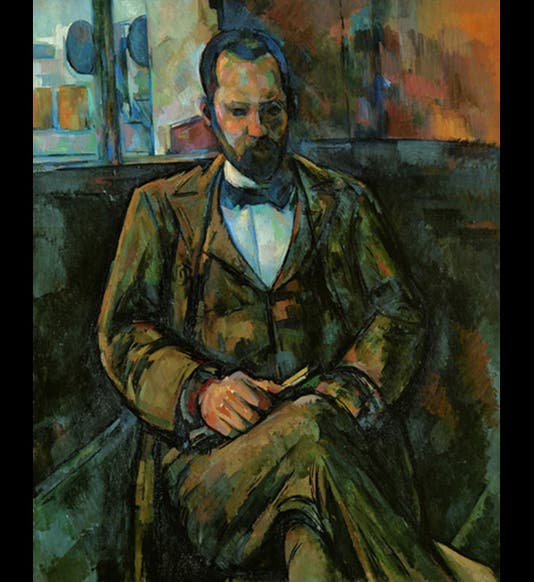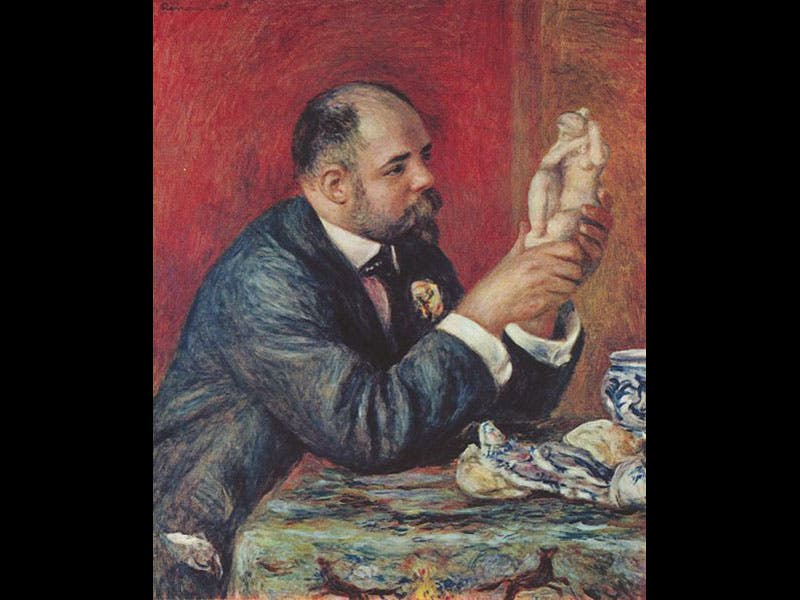Scientist of the Day - Ambroise Vollard
Ambroise Vollard, a French art dealer, was born July 3, 1866. Vollard was a great patron of French impressionism, post-impressionism, and cubism, supporting such artists as Cezanne, Renoir, Rouault, and Van Gogh. Consequently, he had his portrait painted by some of his grateful clients; above we can see Cezanne’s portrait (first image) and that of Renoir (second image). But it is the portrait executed by Pablo Picasso in 1910 that is so interesting to historians of science (third image; the portrait is in the Pushkin State Museum of Fine Arts in Moscow). It used to be thought that the multi-faceted Vollard portrayed by Picasso was inspired by Einstein’s relativity theory and the idea of time as a fourth dimension. But we now know that Einstein had no effect whatsoever on modern art before 1920; what Picasso’s Vollard is reflecting is more likely contemporary artistic interest in the possibility of a fourth spatial dimension, such as that made popular in E.A. Abbott’s Flatland of 1884, where two-dimensional creatures are confronted with the possibility of a three-dimensional world (fourth image). Picasso’s Vollard is seemingly an attempt to imagine what a four-dimensional human might look like in three-dimensional space. It would have been even better if Picasso had painted 10 Vollard portraits, all different, for Abbott advised us that the appearance of a four-dimensional creature would change continually, depending on what “slice” is currently intersecting our three-dimensional world.
We have the first U.S. edition of Flatland (1885) in our History of Science Collection
Dr. William B. Ashworth, Jr., Consultant for the History of Science, Linda Hall Library and Associate Professor, Department of History, University of Missouri-Kansas City. Comments or corrections are welcome; please direct to ashworthw@umkc.edu.








![Using an astrolabe to measure the depth of a well, woodcut in Elucidatio fabricae vsusq[ue] astrolabii, by Johannes Stöffler, 1513 (Linda Hall Library)](https://assets-us-01.kc-usercontent.com:443/9dd25524-761a-000d-d79f-86a5086d4774/a998eb50-55d2-4a88-ace2-a50aa5fa86e7/Stoffler%201.jpg?w=210&h=210&auto=format&fit=crop)

